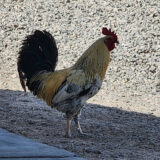TuSimple truck incident leads to investor lawsuit
A class of investors is suing TuSimple for misrepresenting the capabilities of its Level 4 autonomous trucks following an incident involving one of those trucks.
On Aug. 31, Austin Dicker, on behalf of other TuSimple investors, filed a lawsuit against the company in a Southern California federal court. The lawsuit stems from an incident involving a Level 4 truck that sent stock prices down by about 10%.
In a video obtained by Land Line, a TuSimple Level 4 truck is seen veering into a highway median, nearly striking nearby vehicles.
The incident was part of TuSimple’s testing of its Level 4 autonomous trucks. In the video, a test driver is seen reaching over to activate the truck’s autonomous functions. Immediately, the truck jerks to the left, striking a median.
The incident calls into question the capability of TuSimple’s trucks versus what was reported to the National Highway Traffic Safety Administration.
NHTSA reporting
Per a standing general order, certain autonomous vehicle manufacturers are to report crashes to the National Highway Traffic Safety Administration.
According to the raw data, TuSimple reported an incident that occurred in April involving an International LT 625 at approximately 4 p.m. somewhere in Tucson, Ariz. The incident was on a highway with a dry surface, “no unusual conditions” during the day going 65 mph.
Human drivers were monitoring the truck equipped with TuSimple’s highly autonomous technology. NHTSA data reveals that the TuSimple truck struck a fixed object with no injuries. Property damage was reported.
No law enforcement or manufacturer investigation was launched.
When asked if the automation system was engaged during the incident, TuSimple reported “Unknown, see Narrative.”
What is that narrative?
TuSimple’s position is that this event does not meet the criteria for reporting under the (standing general order).
Specifically, the (Level 4 autonomous driving system) was not in operation at any point in the 30 seconds prior to making contact with the concrete barrier.
The event occurred as follows.
As the truck was being operated on the highway, within its mapped ODD, the driver and test engineer attempted to engage the (autonomous driving system). However, the (system) was not functional at that moment due to the computer unit not having been initialized, and should not have been attempted to be activated. In short, this was a failed attempt to engage the system as a result of human error.
The system has now been modified to prevent the ADS from attempting to engage unless the health of the system is fully functional to prevent human error from repeating this event.
When the erroneous attempt to engage occurred, the uninitialized vehicle control unit rotated the steering to the left, causing the truck to veer left. The safety driver took control of the steering, and was able to steer accordingly, but not before the left front truck tire and left front quarter panel came into contact with the concrete barrier to the left of the lanes of travel.
The contact resulted in a scuff to the left tire and damage to the radar unit extending from the left quarter panel.
Land Line acquired photos of a letter sent to TuSimple by the Federal Motor Carrier Safety Administration.
The letter appears to notify the manufacturer of an investigation, in collaboration with NHTSA, into its “operations to determine the level of safety within (TuSimple’s) transportation operation.”
When asked to comment on the video and letter, FMCSA said it does not comment on active investigations. TuSimple did not respond to attempts to reach the company.
TuSimple lawsuit
According to the lawsuit, TuSimple shares fell after the incident was reported.
Specifically, TuSimple shares fell by nearly $1 per share from a closing price of $9.96 per share on July 29 to $8.99 on Aug. 1.
The lawsuit claims that the company made false and misleading statements and failed to disclose the following:
- TuSimple’s commitment to safety was significantly overstated and it concealed fundamental problems with the company’s technology.
- The manufacturer was rushing the testing of its autonomous driving technology in order to deliver driverless trucks to the market ahead of its more safety-conscious competitors.
- There was a corporate culture within the company that suppressed or ignored safety concerns in favor of unrealistically ambitious testing and delivery schedules.
- The aforementioned conduct made accidents involving the company’s autonomous driving technology more likely.
- The aforementioned conduct invited enhanced regulatory scrutiny and investigatory action toward the company.
When the lawsuit was filed, TuSimple shares traded as low as $7.05 per share. That is a decrease of more than 80% from the $40 initial public offering price in April 2021. LL









